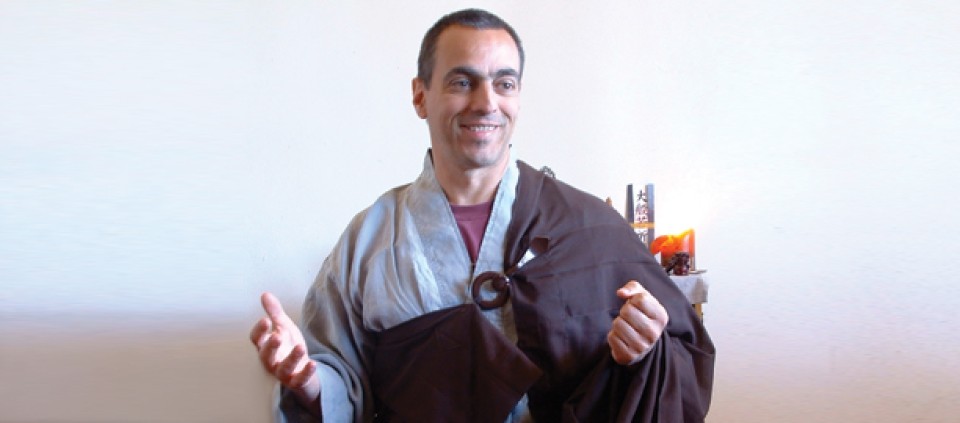Random (and Intentional) Acts of Mindfulness

Frank Jude Boccio, whose Zen dharma name is Poep Sa, is a yoga teacher and a teacher of Zen Buddhism ordained by Korean Zen Master Samu Sunim. He is also an interfaith minister and long-time student of Thich Nhat Hanh. Here he shares a few simple yet powerful ways to integrate mindfulness practices into your daily life—when driving, working, or even drinking your morning coffee.
Gathas
Gathas are an ancient literary form used by Buddhist practitioners, designed to help bring them back to mindful presence through various everyday activities. Traditionally, they followed a four-line form for the most part, but became more free-form over time.
Gathas exist for just about anything you can imagine, and it’s even suggested that you write your own gathas for situations in which you tend to space out or feel aversion. Here are two examples for you to use, or to model your own gathas after.
The Waking Up Gatha is the first thing I say to myself every morning, helping me to remember my deepest aspiration to live mindfully and with compassion. If you’d like to use it, I suggest writing it out and placing it by your bedside. Then, upon awakening, sit up in bed, take a few breaths, recite it to yourself, and take another few breaths, connecting to your intention.
Waking up this morning, I smile.
A brand new day is before me.
I vow to live fully in each moment,
And to look at all beings with the eyes of compassion.
This second gatha is one I like to use to prevent mindless consumption of coffee, or any beverage.
This cup of tea/coffee in my two hands—
Mindfulness is held uprightly!
Mind and body dwell fully
In the here and now.
Micro-Practices
Micro-practices are designed to bring our practice off the mat and cushion and into our daily activities. In my Mindfulness Yoga trainings, students often say that these practices (and the Bells of Mindfulness, below) are the most transformative and profound practices they experience, truly bringing wakefulness into all their relationships and activities.
Choose an activity each week for a month that you know you do regularly, such as brushing your teeth, combing your hair, booting up your computer, etc., and make it a time for mindfulness practice. Stop everything else that you’re doing, and bring attention to your breath, body posture, and movements while doing the activity. Add one micro-practice each week until you have four to six practices that enable you to come to full presence throughout the day.
Bells of Mindfulness
Look around your environment for things that happen often enough, but randomly, such as the phone ringing, train whistles blowing, stopping at a red light, etc., and choose between two and four of these things to function as “bells of mindfulness.” For instance, when the phone rings, rather than slavishly reaching for the phone, stop what you’re doing, take two or three breaths, and then answer the phone. You may be surprised at how radically altered your response and sense of presence will be.
© Kripalu Center for Yoga & Health. All rights reserved. To request permission to reprint, please e-mail editor@kripalu.org.